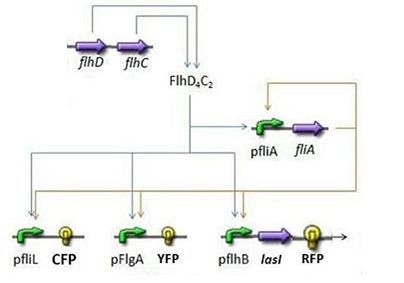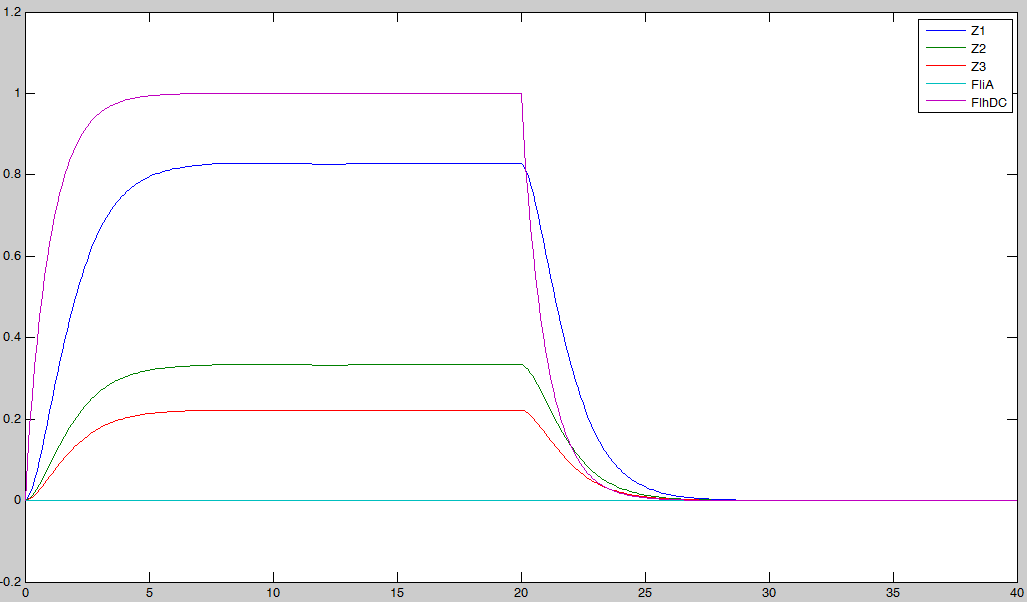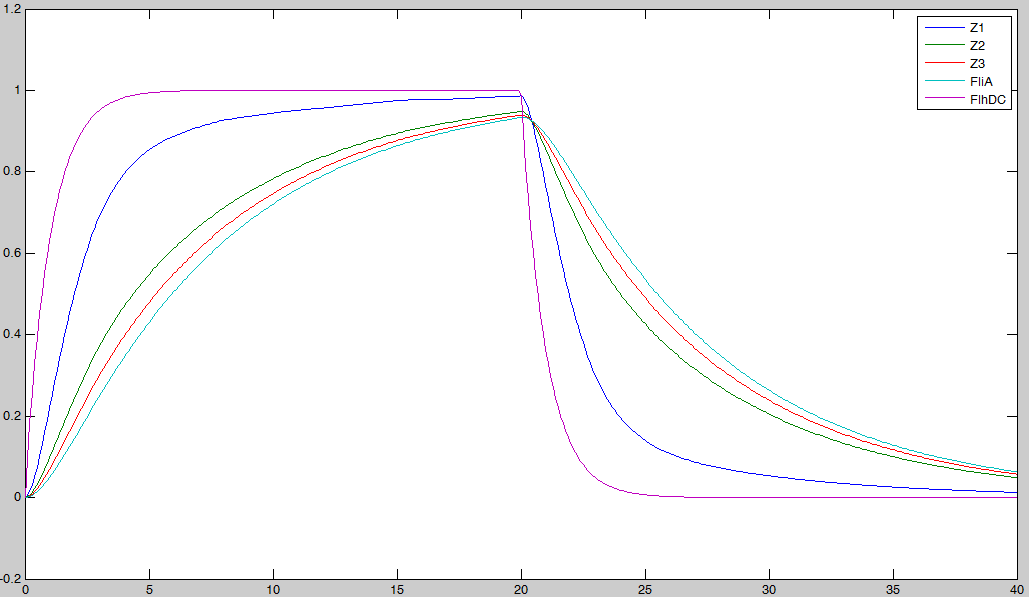Team:Paris/Analysis/Math+Sim
From 2008.igem.org
(Difference between revisions)
(→FIFO) |
(→FIFO) |
||
| Line 5: | Line 5: | ||
= FIFO = | = FIFO = | ||
| - | [[Image:Subsystem1.jpg|center]] | + | * In order to go further into the details of mathematical analysis of the FIFO, let us remind you the set of equations used and the corresponding network (note that you can have an explanation on the way they have been built on the [[Team:Paris/Network_analysis_and_design/Core_system/Model_construction|Model Construction]] page): |
| + | <br> | ||
| + | [[Image:Subsystem1.jpg|500px|left]] | ||
| + | <br> | ||
| + | <br> | ||
| + | [[Image:FliA_dynamics.jpg|450px|right]] | ||
| + | [[Image:CFP.jpg|450px|right]] | ||
| + | [[Image:YFP.jpg|450px|right]] | ||
| + | [[Image:RFP.jpg|450px|right]] | ||
| + | |||
| + | where CFP, YFP, and RFP will be denoted below as respectively Z1,Z2 and Z3. | ||
| + | We have implemented this system using Matlab (see the [[Team:Paris/Modeling/BOB/Simulations/Codes#FIFO|corresponding codes]]) | ||
| + | <br> | ||
| + | <br> | ||
| + | <br> | ||
| + | <br> | ||
| + | <br> | ||
| + | Then, we set ideal conditions, by imposing flhDC as a step function, equal to one then to zero. | ||
| + | * We wanted to see if our predictions were accurate or not. We then solved the equations, forcing the behavior of FhlDC. In a first step, we imposed a constant production term of 1. Then, at a certain time, we set this production term to zero : | ||
| + | [[Image:FlhDC_Test_FIFO_cresc.jpg|center]] | ||
| + | [[Image:FlhDC_Test_FIFO_decresc.jpg|center]] | ||
| + | In fact we assumed that this behavior for FlhDC was acceptable regarding its estimated behavior in the whole system. | ||
| + | * We saw [[Team:Paris/Modeling/BOB#Which_gene_goes_were?|previously]] that without FliA, the FIFO would presumably not work. We then simulated a first system, where [FliA] stays to zero value.<br> | ||
| + | [[Image:essai_without_fliA.jpg|600px|center]]<br> | ||
| + | We may see that there is a LIFO behavior rather than the FIFO we expect... | ||
| + | * Then, we simulated the entire system, to check if we had | ||
| + | ** the lasting burst due to FliA (more important for Z3 than for Z2, and more important for Z2 than Z1) in the increasing phase. | ||
| + | ** the effect of fliA which maintained the concentrations to their maximum (more important for Z3 than for Z2, and more important for Z2 than Z1) in the decreasing phase.<br> | ||
| + | [[Image:essai_with_fliA.jpg|600px|center]]<br> | ||
| + | * We observe on these plots that the behavior is quite the one we expected, and that the FIFO is realized. FliA enables the curves to cross, and adds a delay on the genes that are most affected, with gives a better observability of the FIFO behavior. | ||
= Oscillations = | = Oscillations = | ||
Revision as of 09:08, 26 October 2008
|
Mathematical analysis and simulations
FIFO
where CFP, YFP, and RFP will be denoted below as respectively Z1,Z2 and Z3.
We have implemented this system using Matlab (see the corresponding codes)
In fact we assumed that this behavior for FlhDC was acceptable regarding its estimated behavior in the whole system.
We may see that there is a LIFO behavior rather than the FIFO we expect...
Oscillations |
 "
"



